When I was still in the US and dreamed of living in France, my images were based upon a few visits I’d made to Paris, plus stories I’d read of life in Provence. I adore the culture, the energy, the lovely old apartments with wrought-iron railings, the restaurants, the street markets; in short, everything that Paris has to offer. When I finally moved to France, though, I found myself living in very small towns, first in the Rhône Valley and then in Champagne.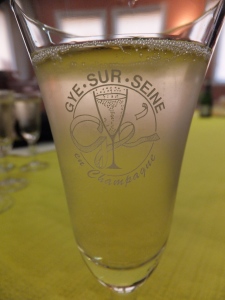
What could be more glamorous than actually living in Champagne? Well, it’s not all bubbles and brie! I’ve moved three times, living first on the Côte des Blancs where many of the great Chardonnay champagnes are born, then close to Epernay with its Disney-like street of glorious, over-the-top champagne mansions.
At last I settled into a sleepy town in the southern part of Champagne, an area called the Côte des Bar, where growers have been providing high-quality Pinot Noir to the grand champagne houses for well over 100 years. Yes, it’s true; your bottle of Moët most likely contains juice from up to a dozen small family winegrowers from this region, blended with grapes from vineyards further north.
So what is real life like for an American living deep in the vineyards of Champagne? Well, for one thing, it’s a heck of a lot quieter than Paris! One might even say it’s too quiet. For most of my first year here, I was sure that this town of 500 really had only 30 people, as the streets were deserted day and night. I saw the same dozen people once in a while, but the truth is that the French spend a lot of time in their homes, with their extended families, and socialize publicly only on rare occasions. Unlike people in small-town America, the French do not open their doors to newcomers, ask them questions, or act particularly welcoming. In the countryside, they tend to grow up with their friends, stay in the same area as their family, and fill their lives with what they know.
Town socialization comes on various commemorative holidays. National French holidays include Armistice Day (November 11) marking the end of WWI; Victory Day (May 8) marking the end of WWII; and Bastille Day (July 14), known in France as the Fête de la Fédération, marking the beginning of the French Revolution and the unity of the French people.
In my little town of Gyé sur Seine, these commemorations start with a small gathering of locals in front of the the mayor’s office, a lineup of the town council next to the WWI monument on the town square, then there is a ½ block march by the town volunteer fire department in full regalia. They march in step from the post office to the town square, about-face and stand at attention while the mayor reads a prepared speech about glory, sacrifice, and peace. Music is played via loudspeaker from a van, including la Marseillaise, the French national anthem. A large flower arrangement is placed at the base of the monument by local schoolgirls, there is a minute or two of silence, then the fire department turns and marches back.
Last week was Armistice Day, so after the speech at the WWI monument, the “crowd” of about 20 villagers followed the firemen up the street to the cemetery, where flowers were laid at the foot of the war memorial, and the names of the villagers who had died in various wars were read out.
Interestingly, after each name read by the mayor, another man read “died in combat” (mort au champ d’honneur – literal translation: died on the field of honor) or “died for France” (mort pour la France), which means that they died during the war, but didn’t die in battle. I found it odd that they felt the need to make this distinction.
Living in Champagne, of course, means that no public commemoration could end without a glass or two of champagne!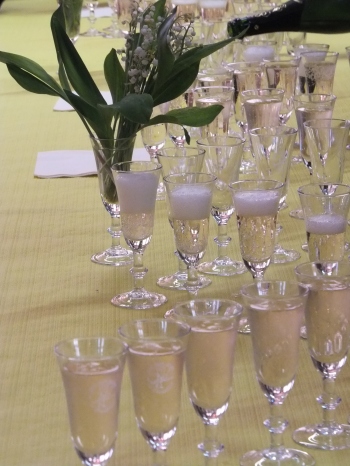
So we all head back to the community center, where the champagne flutes have been lined up and nibbles set out. Corks are popped, glasses are filled, and neighbors chat with others they’ve known all their lives. Glasses are refilled, and then refilled again, with champagne donated by various local producers. Even after two years here, most people don’t know my name and many had no idea there was another American living here. Yes, coincidentally, there is one other American who has lived here for over 25 years, plus two others who have weekend homes here but live in bustling, noisy, wonderful Paris.
There are 15 champagne producers in my little town, and about 60 growers, who sell grapes to the big houses up in Reims and Epernay. The small champagne houses, all family-owned and run, open their doors to visitors for tastings and occasional tours.
Many produce 50-100,000 bottles each year, a mere footnote compared to the millions of bottles made by Veuve Clicquot, Perrier-Jouët, and other big names. Some have fun, unique murals painted on their walls, others have held onto the romantic (yet cold!) ambiance of vaulted stone cellars which can date back over 100 years.
It’s true that life in this town is calm and a bit lonely. I’ve made a few friends, but they’re busy with their families and their work. Living here without a husband or family has been a challenge, but it has left me free to move where life’s opportunities take me.
All in all, I love living in France, and don’t regret any of my choices which brought me here.
Want to read more stories about everyday life for an American in France? Tell me so in the comments below, and I’ll gladly oblige!
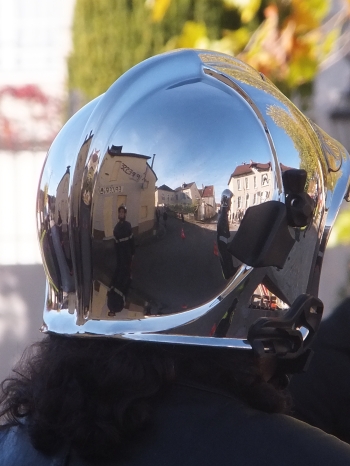
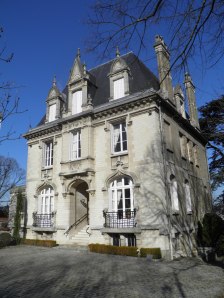
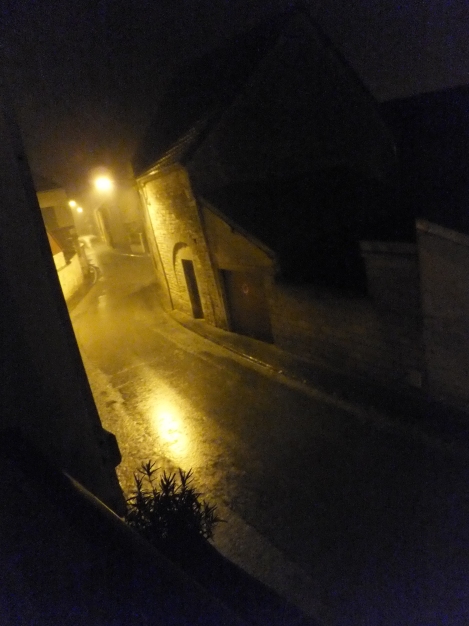
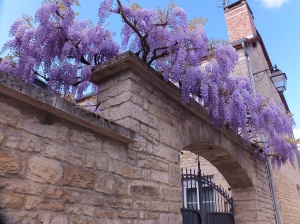
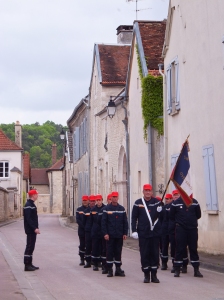
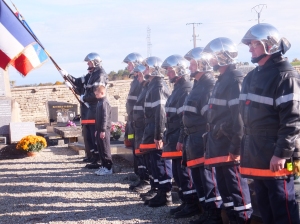
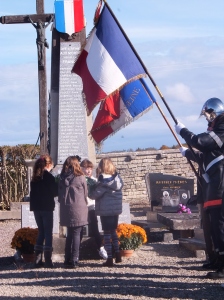

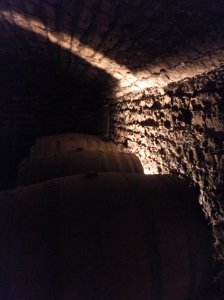

So proud of you Sharona for following your dreams! Thank You for showing us, your reader, what everyday life is like. I can’t wait to see where you go next!
LikeLike
Thanks, Gret-chan, me too!
LikeLike
Loved to read your post. When visiting Champagne, have always thought the villages were like abandoned, so empty, like closed. Seldom any cafés or restaurants with people that you can find in other parts of France. Though never been there in summer, perhaps different then?
LikeLike
Thanks for your comment, Anna.
Many of the older villages are constructed with houses contained behind walls (such as the photo in my post), often with courtyards or gardens inside, which is where the locals hang out. You can find a few more people at restaurants or cafés in the summertime, but only during normal mealtimes (12-2:30, 7:30-10), and never in August. It’s true, everything really does shut down for the summer holidays! Few villages have their own restaurant, so you may have to go to a larger town to find one.
You should definitely visit Champagne in the summer, as it’s lovely and not nearly as hot as Southern France. Make plans and contacts in advance, to make sure you can visit the places you want to see, or contact me in advance if you’re interested in a customized, behind-the-scenes tour.
LikeLiked by 1 person